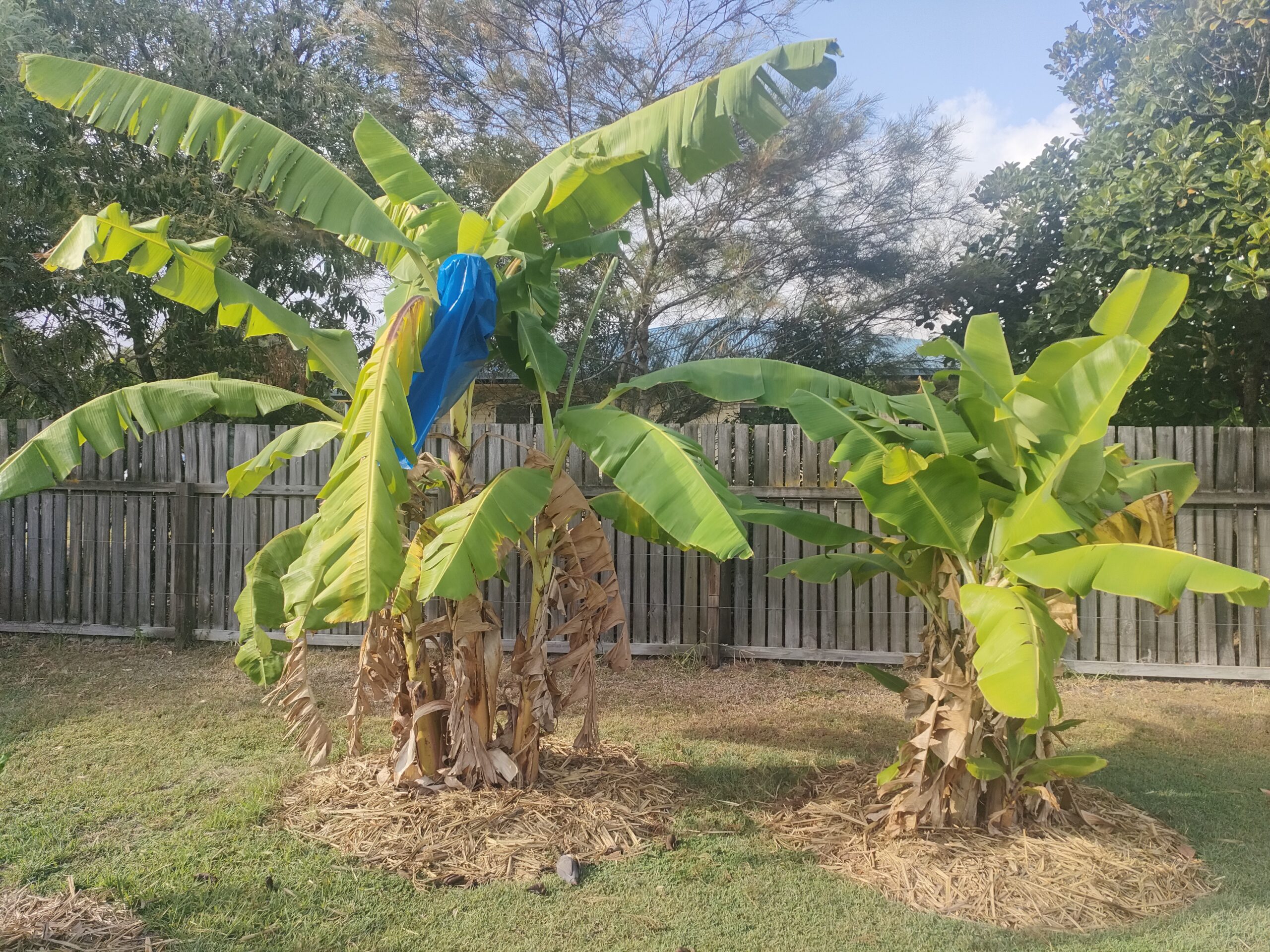G’day, fellow garden lovers! If you’re keen to grow your own bananas in the subtropics, you’re in the right place. Not only do homegrown bananas taste better, but they also save you money and add a lush tropical vibe to your garden. Today, I’m sharing my top tips for growing Lady Finger and Dwarf Cavendish bananas, along with my first experience bagging a banana bunch to protect the fruit. Plus, I’ve filmed a quick 2-minute video to show you how and why to do it!
Why Grow Bananas in the Subtropics?
Bananas thrive in warm, humid conditions, making them perfect for subtropical regions like Queensland. They’re a fantastic addition to any home garden because:
- They provide a continuous harvest year-round.
- They grow quickly, giving you fruit in 12-18 months.
- They create natural shade and improve soil health with their nutrient-rich leaves.
Choosing the Right Banana Variety
When selecting banana plants, it’s important to choose varieties suited to subtropical climates. Here’s why I love these two types:
Lady Finger Bananas
- Sweet, creamy, and great for fresh eating.
- Grow tall (up to 7m) but can be managed with pruning.
- Less prone to disease compared to Cavendish varieties.
Dwarf Cavendish Bananas (my favourite)
- Compact and perfect for small spaces or pots.
- Classic banana flavour with reliable fruit production.
- They are easier to harvest due to their shorter height (2-3m).
Both of these varieties thrive in subtropical conditions and will reward you with delicious homegrown bananas!

How to Grow Bananas: Soil, Water & Fertiliser Tips
1. Get the Soil Right
Bananas are heavy feeders and love nutrient-rich, well-draining soil.
To prepare the best soil:
- Add compost or well-rotted manure before planting.
- Ensure a pH level of around 6.5 for optimal growth.
- If you have heavy clay soil, plant on mounds for better drainage.

2. Keep Up with Watering
Bananas need consistent moisture but hate soggy roots.
To keep them happy:
- Water deeply 2-3 times a week, more in hot weather.
- Mulch around the base to retain moisture and regulate temperature.
- Avoid overhead watering to reduce the risk of fungal diseases.

3. Feed Regularly
Since bananas grow rapidly, they need a steady supply of nutrients:
- Use a balanced fertiliser high in nitrogen, potassium, and phosphorus.
- Apply organic matter like compost or chicken manure every month.
- Feed them more during the warm growing season and less in winter.

The Importance of Bagging Bananas
Bagging is a simple technique that protects your banana bunches from pests, weather, and damage. It works by covering the growing fruit with a breathable bag.
Here’s why I recommend it:
- Prevents pests – Stops fruit bats, birds, and insects from feasting on your bananas.
- Improves fruit quality – Reduces blemishes, keeping bananas cleaner.
- Creates a microclimate – Helps regulate temperature and ripening speed.
- Minimises sunburn – Protects bananas from excessive sun exposure.
My First Bagging Experience (+ Video!)
I recently bagged my very first bunch of Lady Finger bananas, and it was a game-changer! To share my experience, I filmed a quick 2-minute video showing exactly how and why I did it.
🎥 Watch the video here:
In the video, you’ll see step-by-step instructions and learn the best materials to use. If you’ve never bagged bananas before, I highly recommend giving it a go!
Common Banana Growing Problems (and Solutions!)
Even with the best care, bananas can sometimes run into problems.
Here’s how to handle the most common ones:
- Yellowing Leaves? Too much water or a nutrient deficiency – check soil moisture and feed regularly.
- Banana Suckers Taking Over? Remove excess pups to direct energy to the main plant.
- Slow Fruit Growth? This could be due to cold weather or lack of nutrients – be patient and fertilise well.
Join the Community!
I love sharing my gardening journey and learning from others. If you enjoyed this post, make sure to:
Subscribe to my YouTube channel for more gardening videos → https://www.youtube.com/@countrylivingfromscratch
Follow me on social media for behind-the-scenes updates:
- Facebook: https://www.facebook.com/profile.php?id=100087452945440
- Instagram: https://www.instagram.com/countryliving_australia
- TikTok https://www.tiktok.com/@country.living.fr
Your support helps me continue creating valuable content for fellow gardeners like you!
Final Thoughts
Growing bananas in the subtropics is incredibly rewarding, especially when you start seeing those bunches form! By choosing the right variety, keeping up with watering and feeding, and using protective techniques like bagging, you’ll set yourself up for a bountiful harvest.
🌱 Have you tried growing bananas before? Let me know your experiences in the comments below!
